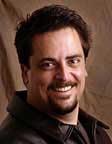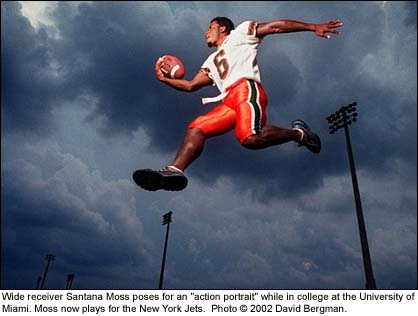|
|
||||
|
The Digital Journalist: Could you be the one individual in the country who had a good year? David Bergman: I hope I'm not the only one, but yes, I did have a good year. It started with a move from Miami to New York City, leaving a great staff job to test the freelance market during an economic recession. In the middle, I found myself covering the aftermath of 9/11 here in the city. Since then, I've been out of town almost every weekend on assignment for Sports Illustrated, have been published in Entertainment Weekly, and worked with musicians Gloria Estefan and Vertical Horizon among others. TDJ: Why did you move to New York? DB: My wife and I were both born in Miami. The town was great to us but we wanted new challenges and have always loved New York City. It just felt like the right time. TDJ: What gave you confidence in your personal and professional life? Did you have a promise, formal or informal of work? How helpful is it to have a specialty? DB: Neither of us had anything lined up when we moved, but we've been very fortunate to thrive in this new environment. A positive attitude definitely helps! Sports Illustrated has been keeping me very busy, but since there are so many editors based in New York, I'm picking up more clients all the time. As a freelancer, having a specialty is incredibly important because you want an editor to think that you are the best person for a particular job -- even though you may have the ability to shoot a variety of different styles. I want that editor to think "David Bergman is the perfect person for this job," rather than, "Well, I think Bergman could probably handle this." I have two different types of work that I like to do -- sports and music -- but I try to shoot them both the same way. I hope that my style shows through even though the events are quite different.
TDJ: Did the Y2K Platypus Workshop affect your vision of the future? Did the video workshop inspire you to try other new directions? DB: Attending the Platypus Workshop in March, 2000 changed me in a number of ways that I didn't expect. First of all, I created an email list for journalists who want to talk about the platypus concept (www.PlatypusPark.com). It's been helpful to communicate with fellow workshop grads and other supportive members of the photojournalism community. More importantly, the workshop reminded me that there are many different types of photography and that there is room for everyone. I didn't leave the newspaper to become a videographer, but I do know that in my efforts to expand my abilities, video has become another tool in my kit. I consider my video camera, microphones, and hot lights to be like extra lenses in my camera bag -- I don't use them every day, but they are appropriate for certain jobs. TDJ: How did 9/11 change you as a New Yorker? DB: This city has a great way of welcoming new people -- it didn't take long for my wife and I to call ourselves "New Yorkers." For the first few days after September 11, I couldn't believe that someone could do this to our city. In the weeks and months following, I developed an even greater respect for the city and the people who live here. TDJ: Sports photography makes great pictures, there's always story with action and drama. How do you know where to position yourself at a game, what do you look for that makes your work special? DB: Great sports photography is simply about three things -- anticipation, hand-eye coordination, and equipment. You have got to understand the game and be able to anticipate what's going to happen. When I covered the 1998 Winter Olympics in Nagano, the first event I photographed was the luge. Growing up in Miami, I had never seen the luge before! Needless to say, it was a challenge, but after a couple of days watching and studying the event, I was able to make a few decent images. Hand-eye coordination is crucial because if you can't react fast enough to focus and hit the button, you're going to miss the moment. Period. As much as we deny it, having the right equipment is important to make great sports pictures. That doesn't mean you can't make wonderful images with a 50mm and a manual camera. But to make the quality and quantity of pictures demanded by a client like Sports Illustrated, you need long lenses, cameras with fast motor drives, and lots of film. TDJ: On your worst day this year, what went wrong? DB: Hopefully, Sept 11th will be the worst day I will see in my lifetime. I'm horrified and sad for the families of those that were lost, but I'm also grateful that my immediate family and close friends were spared. A day like that sure makes having a "bad shooting day" seem trivial. |
|
|
Write a Letter
to the Editor |
 David
Bergman is a photographer and multimedia producer based in New York
City. He spent eight years as a member of the Pulitzer Prize-winning
staff at The Miami Herald before going freelance in early 2001. His
images have appeared in most major U.S. publications including Sports
Illustrated, Entertainment Weekly, Time, Newsweek, U.S. News and World
Report, People, USA Today, and The New York Times.
David
Bergman is a photographer and multimedia producer based in New York
City. He spent eight years as a member of the Pulitzer Prize-winning
staff at The Miami Herald before going freelance in early 2001. His
images have appeared in most major U.S. publications including Sports
Illustrated, Entertainment Weekly, Time, Newsweek, U.S. News and World
Report, People, USA Today, and The New York Times. 
